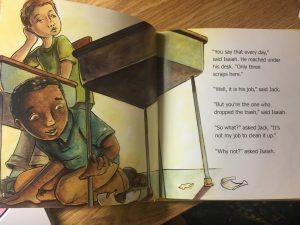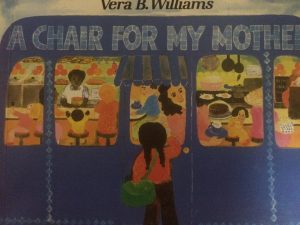Title: Mule Train Mail
Author: Craig Brown
Illustrator: Craig Brown
Publisher: Charlesbridge, 2009
Number of Pages: 34 pages
Tags: Adventure, Animals, Culture, Diversity, Non-fiction, Picture Book, 4-5, Stephanie Prentice
Genre: Non-Fiction
Analysis: Anthony the mail man delivers mail to the town of Supai on a mule for through the Grand Canyon. This nonfiction book tells the story of Anthony’s journey, the only mule train delivery system left in the United States.
This story acts as a window for children to see the culture of the Supai village. The Supai village is located on the Havasupai Indian Reservation at the bottom of the Grand Canyon. This is very unique because people can only access this area by horse, mule, or helicopters. The cultures represented in this book are depicted accurately. The author is very knowledgeable about this culture and delivery system because he took the journey himself before writing this book. He discusses his experience at the end of the book.
 The images, created by the author, begin with a map tracking the map the mule train follows. As Anthony starts his descent to the Supai village, the images turn long-wise, emphasizing the downward descent of the mountain. The images display the different types of weather that the mules face such as snow and ice or very hot. The illustrations accurately depict the terrain in the Grand Canyon. As they reach the bottom of the mountain, the images turn back to horizontal. The double spread page allows the reader to engage themselves in the journey alongside Anthony. The book is told in a narrative manner, as if the author is retelling the story of his journey to a friend. Since this book tells a true story, it introduces children to a different culture. Students who read this book will be introduced to a different type of public service. In addition, it raises awareness about a culture that does not receive a lot of recognition. This book can also be used to show the dedication and determination that Anthony has for his job. The mail gets carried through very dangerous weather that could harm both Anthony and the mules.
The images, created by the author, begin with a map tracking the map the mule train follows. As Anthony starts his descent to the Supai village, the images turn long-wise, emphasizing the downward descent of the mountain. The images display the different types of weather that the mules face such as snow and ice or very hot. The illustrations accurately depict the terrain in the Grand Canyon. As they reach the bottom of the mountain, the images turn back to horizontal. The double spread page allows the reader to engage themselves in the journey alongside Anthony. The book is told in a narrative manner, as if the author is retelling the story of his journey to a friend. Since this book tells a true story, it introduces children to a different culture. Students who read this book will be introduced to a different type of public service. In addition, it raises awareness about a culture that does not receive a lot of recognition. This book can also be used to show the dedication and determination that Anthony has for his job. The mail gets carried through very dangerous weather that could harm both Anthony and the mules.



 Title: Show Some Respect
Title: Show Some Respect













